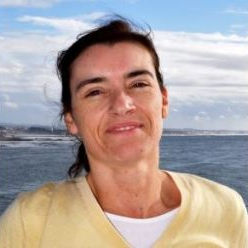Cyanobacteria Harmful Bloom Remediation Enabling Eco-Technology for Water Reclamation
A special issue of Water (ISSN 2073-4441). This special issue belongs to the section "Water Quality and Contamination".
Deadline for manuscript submissions: closed (31 January 2022) | Viewed by 10739
Special Issue Editors
Interests: wastewater treatment; environmental science; analytical chemistry
Interests: environmental toxicology; water quality; harmful algal blooms; shellfish physiology and metabolism; OMICs
Special Issues, Collections and Topics in MDPI journals
Interests: water treatment technology; phytotechnology; constructed wetlands; biofilm reactors; emerging contaminants; water reuse
Special Issues, Collections and Topics in MDPI journals
Interests: environmental pollution; wastewater treatment; water reuse
Special Issues, Collections and Topics in MDPI journals
Special Issue Information
Dear Colleagues,
Toxin-producing harmful algal blooms (HABs) in freshwaters constitute a severe environmental problem. HABs are reported all over the world in many different ecosystems and are often associated with the proliferation of cyanobacteria species. Nonetheless, an increase of frequency and intensity of HABs has been observed, driven by the progressive degradation of the aquatic ecosystems and climate change.
HABs are posing serious constraints on the use of freshwater resources worldwide. The presence of cyanobacterial toxins in the water demands the application of expensive treatments to turn highly contaminated water into water for consumption. In this context, it is thus imperative to develop economic, sustainable, and effective technologies to remove this kind of contaminants and enable water reclamation for different purposes, namely, agriculture irrigation.
This Special Issue is devoted to novel (bio)remediation technologies for cleaning contaminated freshwaters affected by HABs based on their cost-effectiveness, environmental character, and technical applicability. Principles of design and operation of these technologies, their efficiency, and the fate of the biomass and toxins are of particular interest. This Special Issue aims at including both fundamental research carried out on nature-based solutions for cyanotoxins and harmful cyanobacteria but also applied research showing piloting and full-scale systems.
Dr. Marisa Almeida
Dr. Alexandre M. Campos
Dr. Pedro N. Carvalho
Prof. Dr. Laila Mandi
Guest Editors
Manuscript Submission Information
Manuscripts should be submitted online at www.mdpi.com by registering and logging in to this website. Once you are registered, click here to go to the submission form. Manuscripts can be submitted until the deadline. All submissions that pass pre-check are peer-reviewed. Accepted papers will be published continuously in the journal (as soon as accepted) and will be listed together on the special issue website. Research articles, review articles as well as short communications are invited. For planned papers, a title and short abstract (about 100 words) can be sent to the Editorial Office for announcement on this website.
Submitted manuscripts should not have been published previously, nor be under consideration for publication elsewhere (except conference proceedings papers). All manuscripts are thoroughly refereed through a single-blind peer-review process. A guide for authors and other relevant information for submission of manuscripts is available on the Instructions for Authors page. Water is an international peer-reviewed open access semimonthly journal published by MDPI.
Please visit the Instructions for Authors page before submitting a manuscript. The Article Processing Charge (APC) for publication in this open access journal is 2600 CHF (Swiss Francs). Submitted papers should be well formatted and use good English. Authors may use MDPI's English editing service prior to publication or during author revisions.
Keywords
- harmful cyanobacteria
- harmful algal blooms (HABs)
- cyanotoxins
- water reclamation
- irrigation/agriculture
- bioremediation
- nature-based solutions
- phytoremediation
- environmentally friendly technologies








